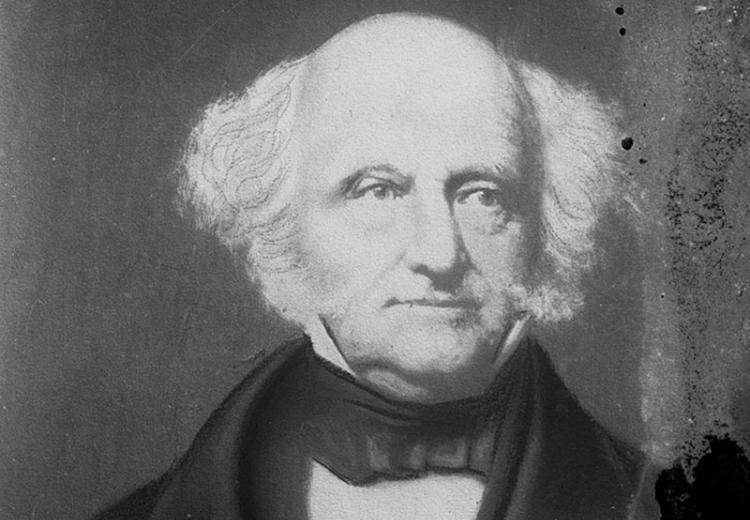The Panic of 1837 and the Presidency of Martin Van Buren

Martin Van Buren—8th President of the United States—took office at a turbulent time for America's economy.
"… the less Government interferes with private pursuits, the better for the general prosperity."
—President Martin Van Buren to Congress, September 5, 1837
President Martin Van Buren inherited “the severe downturn in the American economy that began in 1836.”
"… [It] became Van Buren’s primary concern during his presidency. Historians have identified three causes of the depression that wracked the American economy during the late 1830s. First, English banks—responding to financial troubles at home—stopped pumping money into the American economy, an important reversal since those funds had financed much of the nation’s economic growth over the preceding two decades. Second, U.S. banks, which had overextended credit to their clients, began to call in loans after British banks cut their money supply. Third, President Andrew Jackson’s “hard” money policies, especially the 1836 Specie Circular that aimed to stabilize what Jacksonians saw as an out-of-control economy by requiring that all purchases of federal land be made with precious metal (i.e. “hard” money) rather than paper (“soft”) money, only exacerbated the credit crunch."
—From Van Buren’s Domestic Affairs
In this lesson, students will analyze period political cartoons as they study the causes of the economic downturn, Van Buren’s response as president, and the reaction to his measures.
Guiding Questions
What were the causes of the Panic of 1837 and the economic downturn that lasted from 1836 to 1843?
How was criticism of Van Buren an extension of criticism of Andrew Jackson, his predecessor?
What effect did the downturn have on working Americans?
How did Van Buren respond to the economic downturn? Why did he respond in that way? How effective was his response?
To what extent did party politics affect Van Buren’s response to the Panic of 1837? In turn, how did Van Buren’s policies affect party politics?
Learning Objectives
List the principal causes of the Panic of 1837.
Discuss President Van Buren’s response to the Panic of 1837 and its aftermath. What did he do? Why did he respond as he did? What were the results of his policies?
Reflect on the use of archival political cartoons in the study of history.
Analyze cartoons about the Panic of 1837. What important issues can be identified through the cartoons? In what ways did bias or the passage of time affect the use of the cartoons?
